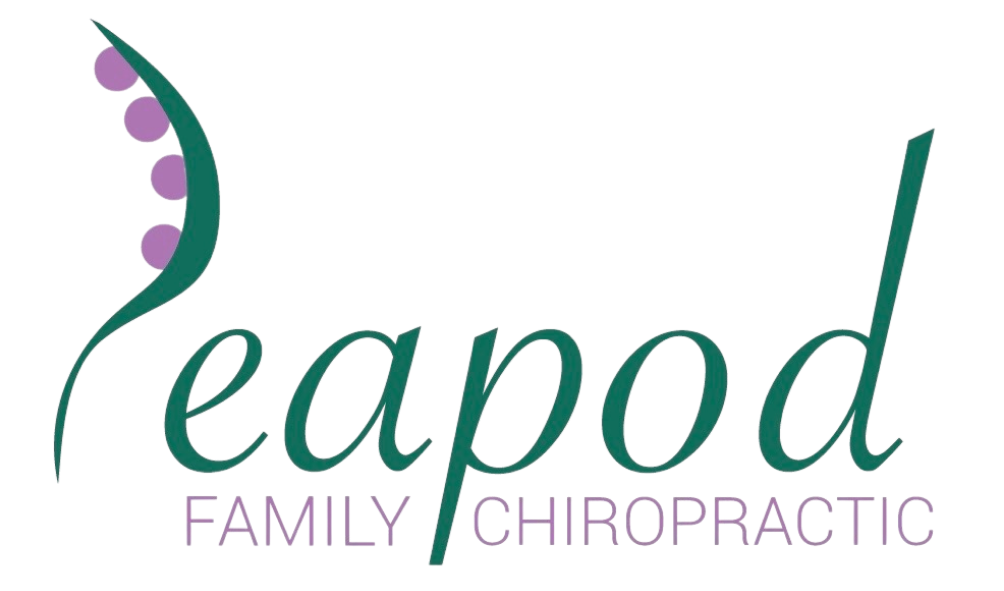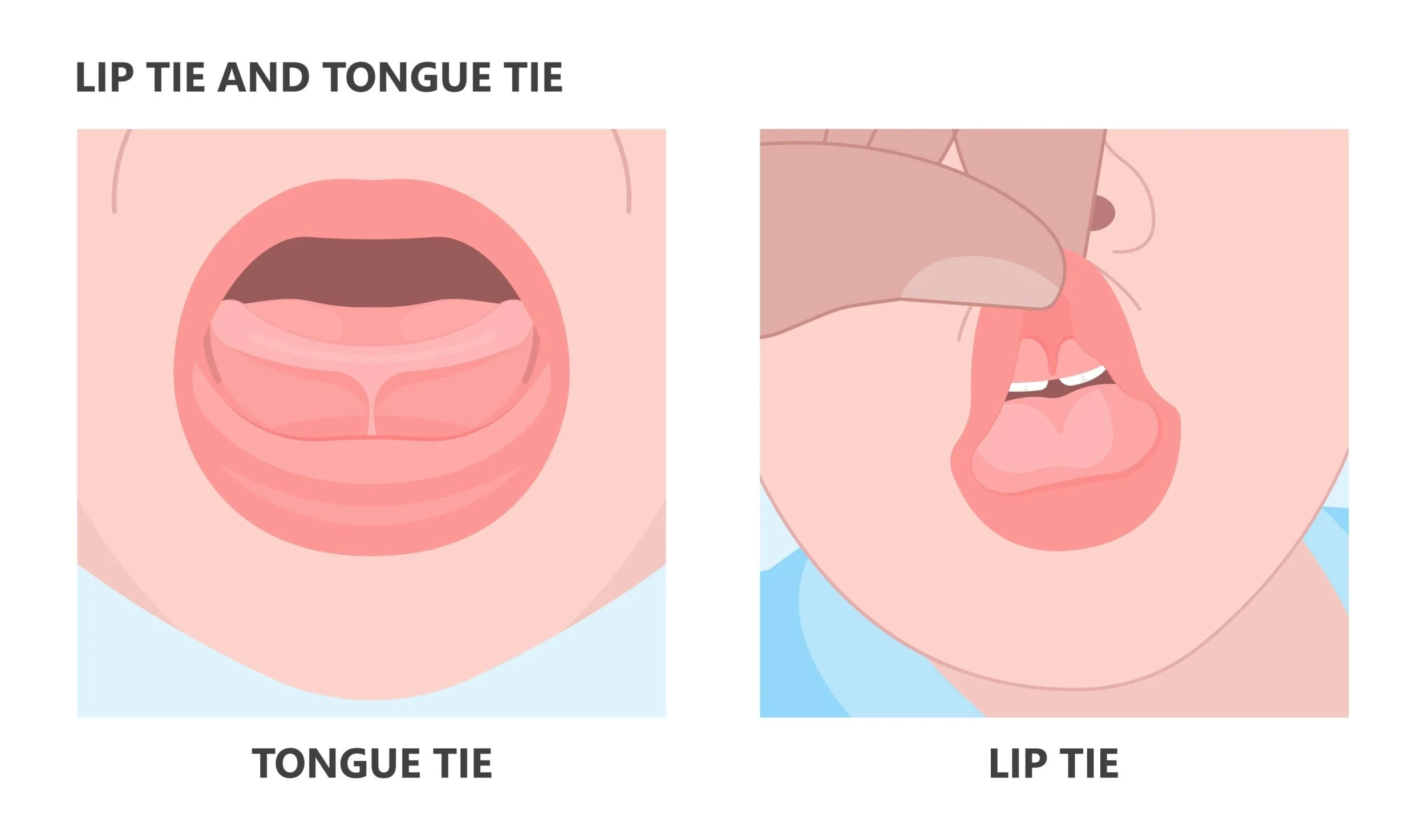Why is it important to have chiropractic care when getting a lip or tongue tie release?
As a pediatric chiropractor, I get a lot of referrals from pediatric dentists who’s patients have had laser lip and tongue tie revision. For that reason, I’ve decided to pair up with Dr. Kacie Culotta of Latched Beginnings for this blog! Since she’s the expert in lip and tongue tie diagnosis and revision, I’m going to let her take the reins on that. After that, I will talk about the importance of chiropractic care and how it plays into all of it!
WHAT IS A TIE?
First we need to understand oral frenulums: which EVERY person should have. It is that band of tissue that connects from a movable structure to an immoble structure (ex: from your top lip to the bone above your front teeth)
Frenulums are FASCIA (which is a type of connective tissue made of collagen) that in approx. 5 different locations of your mouth. (Max/mand lip, tongue, right/left buccal)
A tie is a frenulum that is so tight (ie tied) that restricts the range of movement is what equals a tongue tie, lip tie or buccal tie.
image courtesy of Park View Pediatric Dentistry
HOW IS IT DIAGNOSED?
Function of the tissue is how we diagnose NOT SIMPLY BY PHOTOS.
A great release provider will not only examine your infant’s mouth, they should lift the tongue cheeks and lips. Evaluate suckling and suction strength. Evaluate mandibular movement, head shape, body position while laying down and signs of obvious tension. The key when evaluating is that we are NOT just basing a diagnosis of the look, but the function. A frenulum with full range of motion like the tongue should be able to move side-side, stick the tongue out and elevate the tongue to the palate. Many uneducated health professionals often say that as Baby can move the tongue there isn’t a tie. This isn’t true. A tongue/lip should have a full range of motion, I often compare the tongue movement to that of our knees: healthy knees should be able to jump, move side to side and walk. If your knees only move in one direction, that is an issue.
WHAT ARE THE CHALLENGES THAT CAN ARISE FROM NOT GETTING IT REVISED?
An infant with an untreated tie will grow to be an adult with an untreated tie.
The human body is smart and will find ways to compensate for the deficiency. Though these compensation fatigue and hurt our bodies in the long-term.
Oral Tie SYMPTOMS in older Children/Adults
Sleep apnea Snoring
Teeth gapping
Anterior open bite
Retruded mandible/chin “Overbite”
Acid reflux
TMJ Pain
Mouth breathing
Low tongue posture=forward head posture to compensate
Teeth movement/turning/crowding
Premature tooth decay due to not being able to clean teeth Pain while brushing teeth
Speech issues: lisp, /r/ and /l/, phonological delays, avoiding
talking, behind in speech
Imprecise articulation due to slow movement of tongue
Speaking out of side of mouth Resonance issues similar to deaf speech
Impacted self-esteem
Food & texture aversions
Holding food in mouth instead of chewing
Affected smile Jaw issues TMJ
Grinding of jaw
Facial tension: Which can lead to body tension, especially in
neck, shoulders and back
Throat/Neck pain during talking/eating/chewing Migraines
WHAT DOES A REVISION LOOK LIKE?
The revision itself is actually much easier than most families anticipate, when you’re treated by an experienced provider. In my practice, I place a lidocaine-based numbing cream on the area (which is dye-free, taste-free, GF, corn+soy-free and scent-free). Baby is then wrapped in their swaddle and then we place the CUTEST safety goggles on them.
After this in my practice, I use a CO2 laser which looks similar to a thin pen and the release takes about 30 seconds for each area. The infant is then unswaddled and the family comforts them however they choose (ex: by feeding them, cuddling).
IMPORTANCE OF BODYWORK BEFORE & AFTER FROM A PEDIATRIC DENTIST:
Bodywork is in my opinion vital for complete success. I believe this so much so that my own daughter (Ila 4 months) received chiropractic care with Dr. Brittany both before and after her tongue and lip tie release.
Again, that tie is formed while the baby is 2 months in-utero so even when Baby is born they have already learned compensation and that often appears as body tension and misalignment. Decreasing these compensations and tensions and restoring the body’s natural alignment is important both pre and post release. As Dr. Brittany is the expert, decreasing these compensations/tensions help soothe your Baby’s nervous system. I see it so often that a “high toned baby” receives chiropractic care at the start of their treatment plan and we already start to see improvement. Pre bodywork decreases head/neck tension, resulting in the floor of the mouth relaxing and the tongue having more strength. This is the PERFECT time for a release as 1. The tongue is easier to access and release and 2. During the procedure, the baby begins to relax and stays more relaxed. My absolute favorite procedures are on infants that had recent (even day of) bodywork. They are in that perfect neuro state.
Post release bodywork allows the Baby to continue to remove those compensations, which takes time. Each appointment gets them healthier, though they have lived with their oral deficiency/tie for months and it takes multiple appointments of bodywork to remove it and restore their nervous system and body alignment. I typically find it takes a full 6-8 weeks after the release to see full results.
When I typically get a referral from a pediatric dentist, they'll say the baby has some restriction in their neck. Chiropractic is actually working on the most commonly subluxated vertebrae which is the atlas or the top vertebrae of the spine. This subluxation is most commonly due to birth trauma. A study by two German doctors actually concluded that 80% of the time, no matter how a baby was born, whether it be vaginal, cesarean, in a hospital, at home, etc. there was an upper cervical misalignment. That top vertebrae of the spine controls the position of the head. So if they are always looking to the right, it's a pretty good indicator that they have a right atlas. (This is usually the first thing I tell parents to look for.)
Additionally, the nerves that come out of that area go into the mouth, jaw and palate. So sometimes what happens is if they have a lip or tongue tie and they get that revision, their nervous system is still primed to have those habits left over from when they still had the physical restriction.
Yes, the physical restriction has been released, but the baby hasn’t been taught their new anatomy yet. Chiropractic work can help relieve tension that might exist in the nervous system so that it's almost like hitting the reset button. It's giving them that nervous system input to be able to make those changes.
Chiropractic care in infants looks very different than in adults. The adjustments are very gentle (sometimes even boring!)- no twisting/cracking/popping. Part of being a pediatric chiropractor is being able to locate subluxation patterns (areas of stress and nervous system tension) in the spinal column and working with the body to alleviate that pattern. The result is a balanced nervous system which helps the infant’s constantly developing system and it also helps them adapt to changes (in this case- the physical change of a lip/tongue tie revision).
If your baby has a lip or tongue tie and has or is going to have it revised, I highly recommend scheduling an evaluation with a pediatric chiropractor to break the habits they developed from this physical restriction. If you’re in the Austin, Texas area, I can help!





